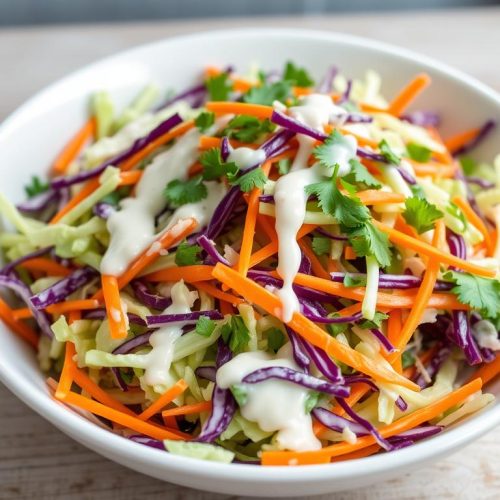I’ve learned how to eat well even when money is tight. I’m here to share my tips with you. This guide will show you how to eat healthy without spending too much. Discover my proven strategies for how to eat healthy on a budget while maximizing nutrition. Get practical tips for smart grocery shopping and meal planning that save money
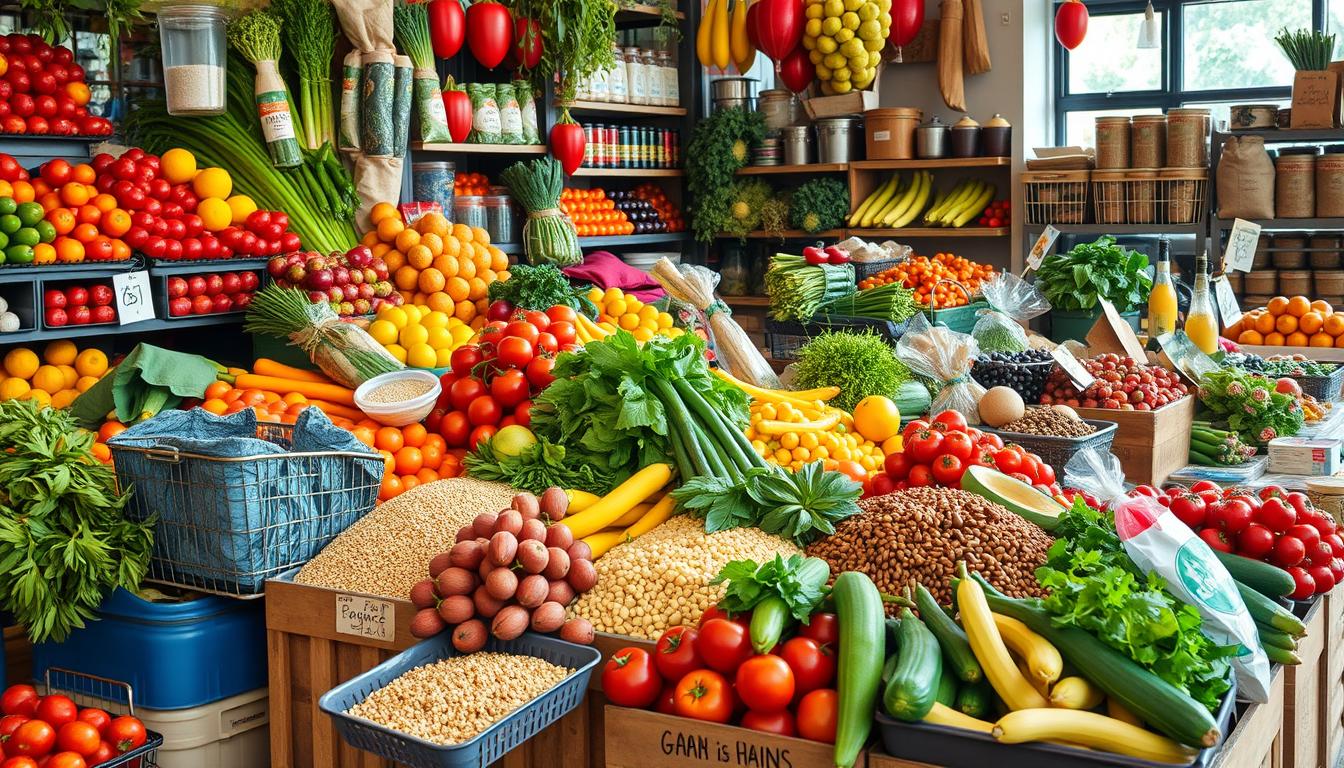 alt=”How to Eat Healthy on a Budget” data-id=”133113507″ />
alt=”How to Eat Healthy on a Budget” data-id=”133113507″ />
Key Takeaways
- Debunking common misconceptions about the cost of healthy food
- Identifying essential nutrients that can be obtained on a tight budget
- Mastering the art of smart meal planning to save money
- Discovering affordable protein sources for balanced nutrition
- Leveraging seasonal produce and local farmer’s markets to maximize savings
We’ll uncover the secrets of eating well on a budget together. You’ll learn how to eat healthy without spending too much. Let’s start exploring how to eat well on a budget!
Read More:
- Easy Homemade Chicken Chili Recipe
- 15 Quick and Delicious Low Carb Breakfast Recipes
- 7-Day Best Meal Plan for Weight Loss that Works
Understanding the Basics of Budget-Friendly Nutrition
Eating healthy doesn’t have to cost a lot. Many think it’s expensive, but it’s not. You can eat healthy on a low budget with smart choices.
Common Misconceptions About Healthy Food Costs
People often think fresh foods cost more than packaged ones. But, foods like beans, lentils, eggs, and frozen veggies are cheap. Also, not all organic produce is needed to eat well. You can find affordable, healthy options.
The Real Cost of Unhealthy Eating Habits
While cheap foods might seem good, they can harm your health. Conditions like heart disease and diabetes come from bad diets. Eating well now saves money and health problems later.
Essential Nutrients on a Tight Budget
- Protein: Lean meats, poultry, eggs, legumes, and dairy products
- Fiber: Whole grains, fruits, and vegetables
- Vitamins and minerals: Leafy greens, citrus fruits, bell peppers, and sweet potatoes
Focus on these foods to stay healthy without spending a lot. With planning and creativity, eating healthy on a low budget is possible.
Smart Meal Planning Strategies That Save Money
Eating healthy doesn’t have to cost a lot. You can make tasty, healthy meals without spending too much. One smart way is to plan meals that use cheap, healthy foods.
First, check what you have in your pantry and fridge. Look for things like whole grains, beans, lentils, and frozen veggies. These are cheap and full of good stuff. Use them to make a meal plan that you can change up all week.
- Batch cook grains, proteins, and veggies to make different meals
- Choose recipes that use the same ingredients to cut down on waste
- Try meatless meals a few times a week to save money on meat
Another smart move is to use leftovers. Set aside one night a week for leftover meals. Get creative with leftovers, like turning roasted veggies into soup or making a stir-fry with extra chicken.
| Meal Planning Tip | Potential Savings |
|---|---|
| Batch cooking | Up to 30% less food costs each week |
| Using leftovers | Up to 15% less food waste each week |
| Choosing plant-based meals | Up to 25% less meat costs each week |
By using these smart meal planning tips, you can eat well and save money. Being organized and choosing affordable foods are the secrets to eating on a budget without losing out on taste or health.
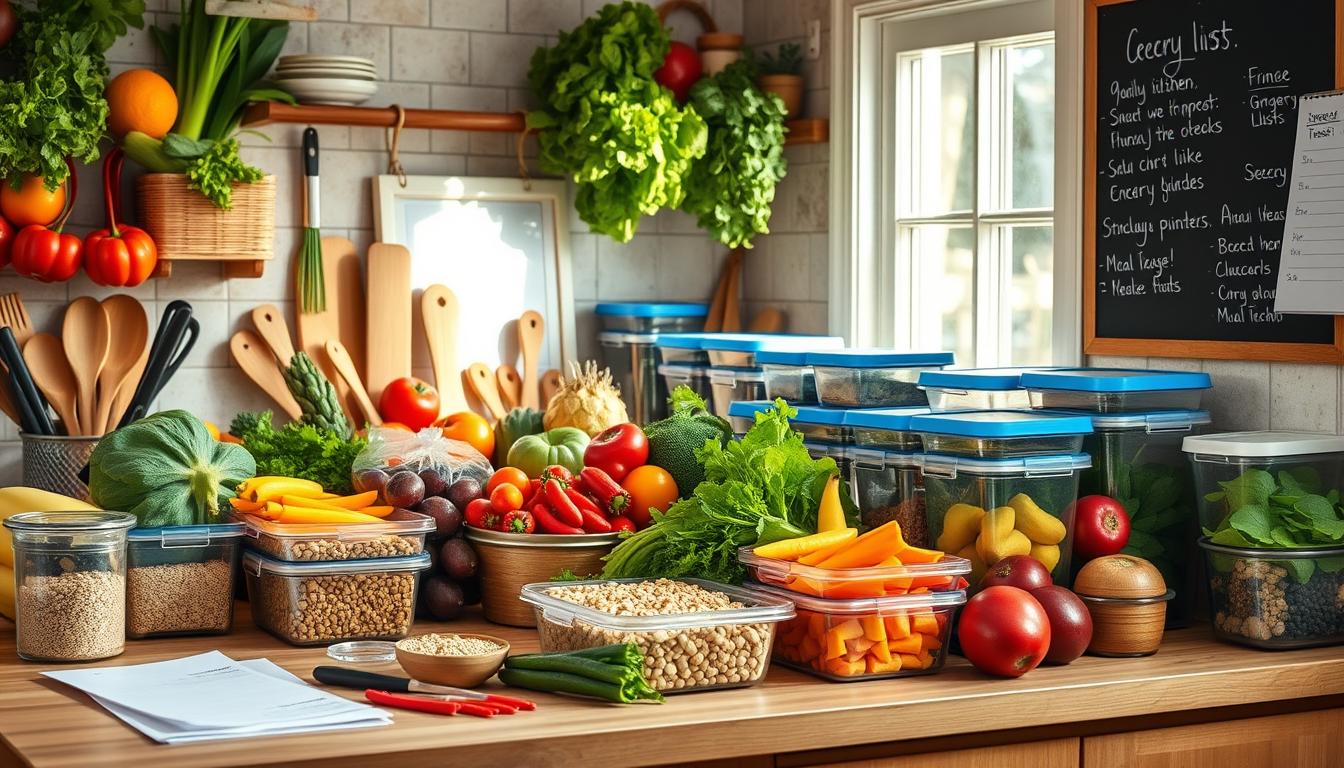 alt=”meal planning tips” data-id=”133113509″ />
alt=”meal planning tips” data-id=”133113509″ />
How to Eat Healthy on a Budget: A Complete Guide
Eating healthy doesn’t have to cost a lot. You can eat well without spending too much. This guide will show you how to do it, from meal prep to saving money.
Weekly Meal Prep Basics
Meal prep changes the game for budget eating. It saves money and reduces waste. Start with simple recipes that use affordable, long-lasting ingredients.
- Cook in bulk to save time and money
- Use whole grains, lean proteins, and fresh veggies
- Freeze meals for later
Shopping List Essentials
For cheap, healthy food, make a good shopping list. Focus on basics like eggs, beans, and whole grains. Avoid expensive, processed foods.
| Item | Average Cost (per pound) |
|---|---|
| Eggs | $2.50 |
| Dried Beans | $1.50 |
| Frozen Broccoli | $1.75 |
| Whole Wheat Bread | $3.00 |
Storage Solutions for Extended Shelf Life
Good storage keeps food fresh longer. Use airtight containers and freezer bags. This cuts down on waste and keeps food ready to eat.
With these tips, you can eat healthily without spending a lot. A little planning and a full pantry make it easy.
Affordable Protein Sources for Balanced Nutrition
Keeping a balanced diet can be hard when money is tight. But, there are many cheap protein sources to help. As someone who loves nutrition on a budget, I’m excited to share some affordable options. These will make your meals healthy and tasty.
Beans are a great and cheap protein choice. You can find them canned or dried. Beans are full of plant-based protein, fiber, and minerals. Try lentils, chickpeas, or black beans in soups, stews, and veggie dishes.
Eggs are another affordable animal protein. They’re full of protein and vitamins. Eggs can be cooked in many ways. Add them to whole grains and veggies for a balanced, nutrition on a budget meal.
Canned tuna or salmon are also good protein sources. They’re not just protein but also omega-3s for your heart. Use them in salads, sandwiches, or pasta.
“Eating healthy on a budget is all about being creative and embracing affordable, nutrient-dense ingredients.”
By trying these nutrition on a budget options, you can eat well without spending too much. A little planning and trying new recipes can help keep you healthy, even when money is tight.
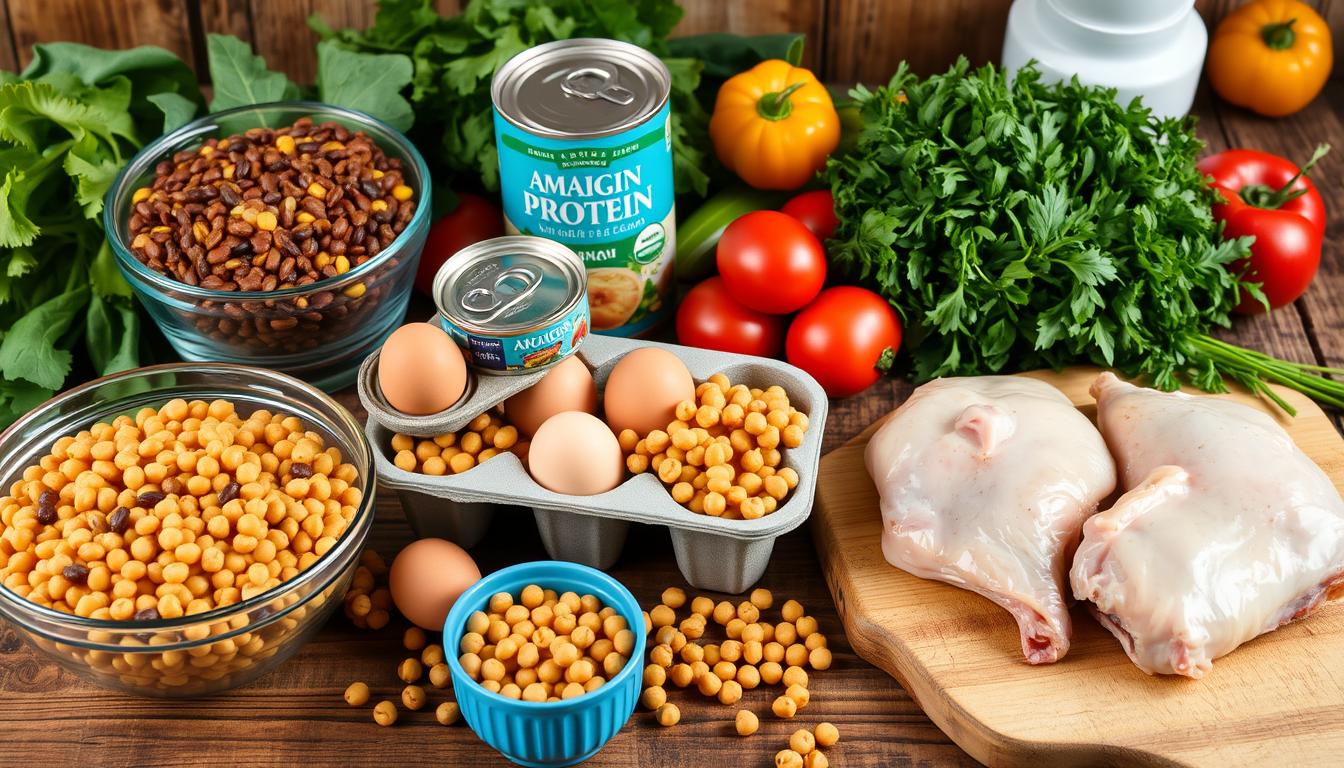 alt=”affordable protein sources” data-id=”133113511″ />
alt=”affordable protein sources” data-id=”133113511″ />
Seasonal Shopping: Making the Most of Fresh Produce
Healthy eating on a budget gets easier with seasonal produce. Buying fruits and veggies when they’re in season boosts nutrition and saves money.
Best Times to Buy Different Fruits and Vegetables
Some fruits and veggies grow better at certain times. Tomatoes are best in summer, and spinach and kale in spring and fall. Planning meals around these seasons means fresher, tastier food and lower costs.
Local Farmers Markets vs. Supermarkets
Local farmers markets are great for affordable, healthy food. They often cost less than supermarkets and offer fresher, more nutritious produce. Many markets also accept SNAP, helping those with tight budgets get quality food.
| Produce Item | Peak Season | Farmers Market Price | Supermarket Price |
|---|---|---|---|
| Tomatoes | Summer | $2.50/lb | $3.99/lb |
| Spinach | Spring, Fall | $3.00/bunch | $4.29/bunch |
| Apples | Fall | $2.75/lb | $3.49/lb |
Knowing when to buy seasonal produce and using local farmers markets opens up budget-friendly healthy eating options. A bit of planning and flexibility can lead to enjoying the best, healthiest foods without breaking the bank.
Budget-Friendly Pantry Staples That Last
Stocking your kitchen with the right pantry staples is key to eating well on a budget. These affordable, versatile ingredients can make many healthy and delicious meals. Let’s look at some of the best budget-friendly options that are nutritious and last long.
Grains and Legumes
- Brown rice: A wholesome, fiber-rich grain that’s endlessly versatile.
- Quinoa: A protein-packed pseudo-grain that cooks up quickly.
- Lentils: An inexpensive source of plant-based protein and fiber.
- Chickpeas: Versatile legumes that can be used in everything from salads to curries.
Canned Goods
- Canned tomatoes: The foundation for many sauces and soups.
- Canned beans: A budget-friendly source of protein and fiber.
- Canned tuna or salmon: Packed with omega-3s and easy to incorporate into meals.
- Canned vegetables: A quick way to add nutrients to your dishes.
Spices and Seasonings
Building a well-stocked spice cabinet can transform even the most basic ingredients into flavorful meals. Some budget-friendly options include garlic powder, onion powder, paprika, cumin, and dried herbs like oregano and basil.
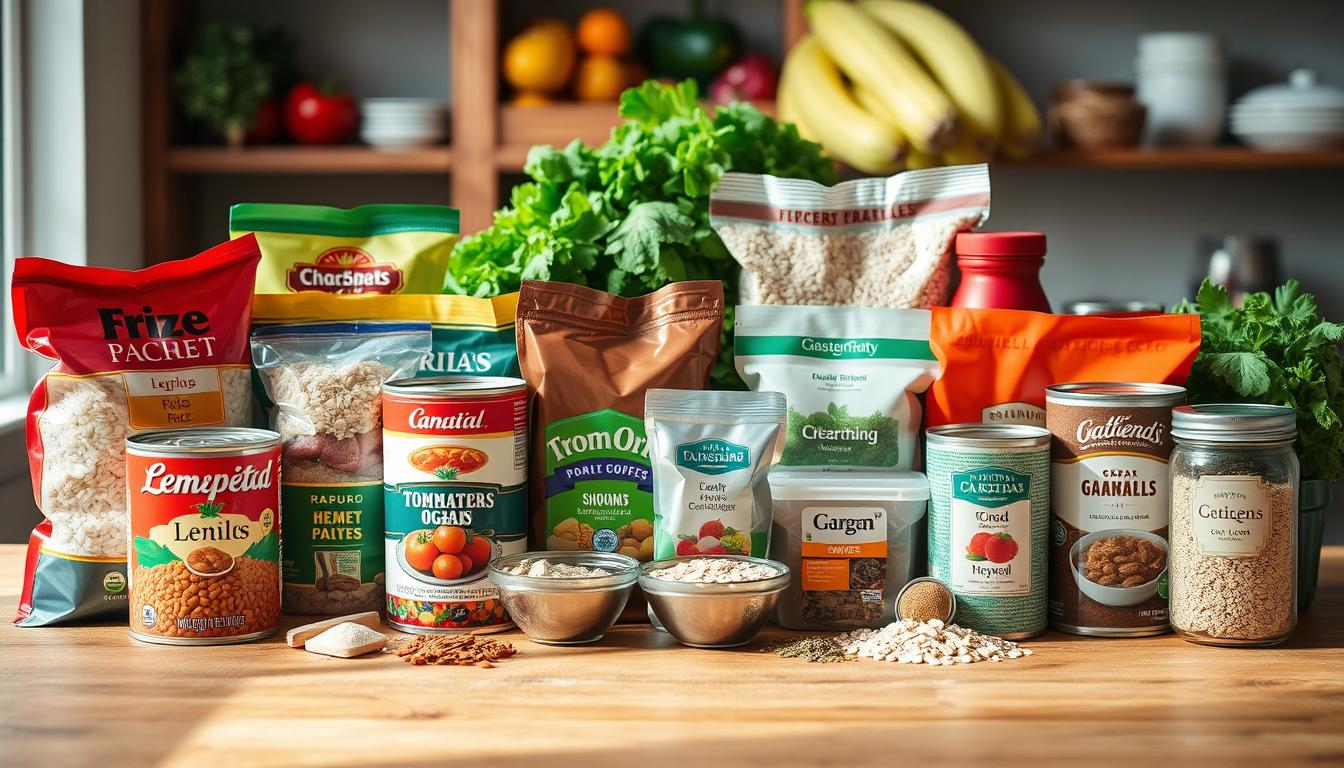 alt=”budget-friendly pantry staples” data-id=”133113513″ />
alt=”budget-friendly pantry staples” data-id=”133113513″ />
By keeping these versatile pantry staples on hand, you can easily create nutritious and cost-effective meals. With a little creativity, these budget-friendly ingredients can be the foundation for a wide variety of delicious and healthy dishes.
Simple Cooking Methods to Maximize Nutrients
Trying to eat healthy on a tight budget? It’s key to keep your meals full of nutrients. Luckily, there are easy cooking ways to do this without spending a lot.
Time-Saving Kitchen Tools Worth the Investment
Getting a few important kitchen tools can make cooking faster and better. Think about getting a good chef’s knife, a strong cutting board, and a reliable blender or food processor. These tools help you chop, dice, and blend foods quickly and keep nutrients in.
Batch Cooking Benefits
Batch cooking is a big help when you’re trying to eat healthy on a budget. It lets you cook more food at once, saving time and money. Plus, you’ll have healthy meals ready to go, making it easier to eat healthy on a low budget all week.
| Cooking Method | Nutrient Retention | Time Savings | Cost Efficiency |
|---|---|---|---|
| Steaming | High | Moderate | High |
| Roasting | Moderate | High | High |
| Sautéing | Moderate | High | Moderate |
| Slow Cooking | High | High | High |
Using these simple cooking methods and tips, you can make your meals healthier and cheaper. With a bit of planning and the right tools, eating healthy on a low budget is easy and doable.
Money-Saving Tips for Grocery Shopping
Eating healthy doesn’t have to cost a lot. I love finding ways to save money at the grocery store. You can eat well and save money with a few easy changes.
One great tip is to use coupons effectively. Look for coupons online or in papers before you shop. Find deals on things you buy often. Try new foods if they’re cheaper.
- Compare unit prices to get the best value. Sometimes, buying more can save you money, even if it costs more upfront.
- Choose seasonal produce. It’s cheaper and full of nutrients. Plan your meals to use these seasonal foods.
- Stick to your list to avoid buying things you don’t need. Plan your meals and make a list before you go. This helps you stay on track and save money.
Using these tips, you can how to eat on a budget and still eat healthy. Small changes can lead to big savings over time.
“The key to eating healthy on a budget is being a savvy shopper and making the most of your grocery dollars.” – Nutritionist Jane Doe
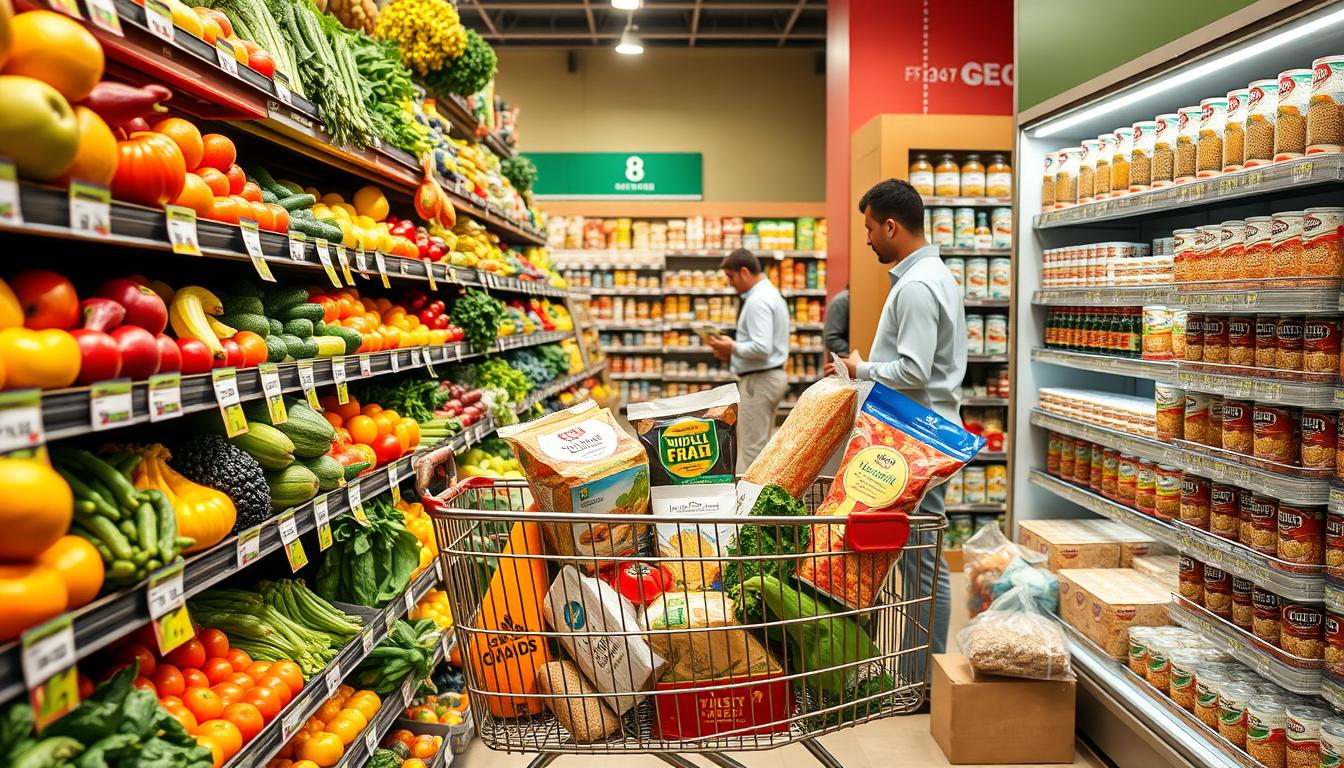 alt=”grocery shopping tips” data-id=”133113515″ />
alt=”grocery shopping tips” data-id=”133113515″ />
Making the Most of Leftovers and Food Storage
In my journey to eat healthy for cheap, I’ve learned that reducing food waste is key. By getting creative with leftovers and mastering proper food storage techniques, I can stretch my grocery budget even further. Let’s dive into some practical tips to help you make the most of every bite.
Creative Leftover Recipes
Don’t let those extra servings go to waste! With a little imagination, you can transform leftovers into delicious new meals. Try repurposing roasted vegetables into a frittata, or use that extra chicken in a flavorful stir-fry. Soups and stews are also excellent vehicles for using up odds and ends in the fridge.
- Reinvent leftovers into a new dish, like casseroles or fried rice
- Blend leftover produce into smoothies or sauces
- Freeze extra portions for easy-to-reheat meals later
Proper Storage Techniques
Mastering food storage is crucial for keeping healthy ingredients fresh and nutritious. Learn the best ways to store different foods, from airtight containers for grains to crisper drawers for produce. Proper storage can extend the shelf life of your groceries and minimize spoilage.
| Food Item | Storage Tip |
|---|---|
| Leafy Greens | Store in a sealed bag or container with a paper towel to absorb moisture |
| Meat and Poultry | Freeze in airtight packages or containers for longer-term storage |
| Bread | Keep at room temperature in a bread box or paper bag to prevent mold |
By making the most of leftovers and mastering food storage, you can reduce waste and get the most value out of your grocery budget. With a little creativity and planning, eating healthy on a budget becomes a delicious and sustainable reality.
Healthy Snacking Without Breaking the Bank
Healthy eating doesn’t mean you can’t snack. There are many tasty, affordable snacks out there. I love finding budget-friendly options for snacks.
Homemade energy bars are a favorite of mine. They’re easy to make with oats, nuts, and dried fruit. They’re cheaper than store-bought bars and you can pick your flavors.
DIY trail mix is another great choice. Buy nuts, seeds, and dried fruit in bulk. This way, you make a mix that’s cheaper than store-bought ones.
For a crunchy snack, try air-popped popcorn. It’s full of fiber and low in calories. Add spices or olive oil for extra flavor.
For a sweet treat, make your own fruit leathers or veggie chips. They’re easy to make and full of nutrients.
| Snack | Cost per Serving | Nutritional Benefits |
|---|---|---|
| Homemade Energy Bars | $0.50 – $1.00 | High in fiber, protein, and healthy fats |
| DIY Trail Mix | $0.75 – $1.25 | Good source of vitamins, minerals, and antioxidants |
| Air-Popped Popcorn | $0.25 – $0.50 | Whole grain, high in fiber, low in calories |
| Homemade Fruit Leathers | $0.30 – $0.75 | Rich in vitamins, minerals, and natural sweetness |
The secret to affordable snacking is using whole foods and making things at home. With a bit of creativity, you can enjoy tasty, healthy snacks without spending a lot.
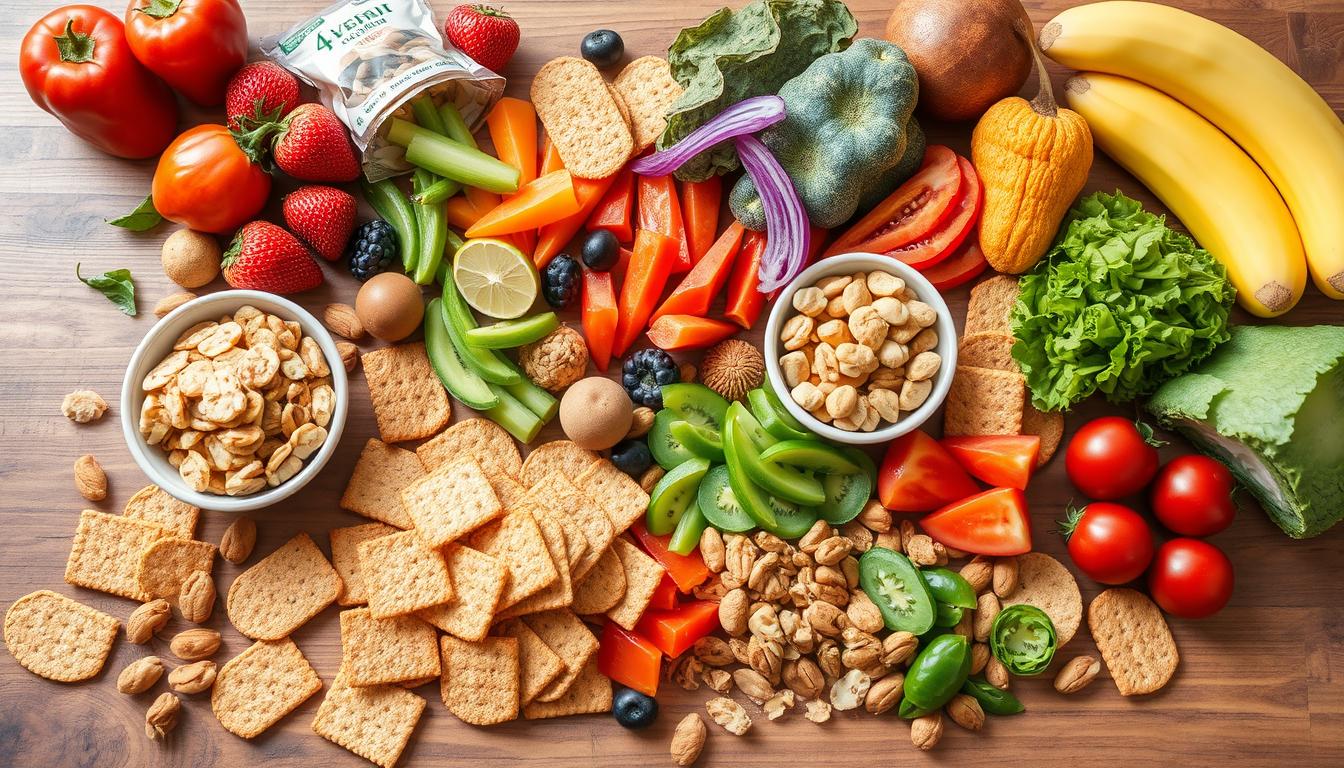 alt=”nutrition on a budget” data-id=”133113517″ />
alt=”nutrition on a budget” data-id=”133113517″ />
Building a Cost-Effective Weekly Menu
Planning your meals is key to eating healthy on a budget. A good meal plan meets your nutritional needs without spending too much. Let’s look at some budget meal plans and find affordable, nutritious foods.
Sample Budget Meal Plans
Here are some budget-friendly meal plans. They use healthy, affordable ingredients:
Monday: Chicken stir-fry with broccoli, bell peppers, and brown rice
Tuesday: Lentil and vegetable soup with whole-grain crackers
Wednesday: Baked salmon with roasted sweet potatoes and steamed green beans
Thursday: Vegetarian burrito bowls with black beans, avocado, and salsa
Friday: Grilled chicken breast with quinoa and roasted Brussels sprouts
Saturday: Beef and barley stew with a side salad
Sunday: Whole-wheat pasta with homemade tomato sauce and sautéed spinach
Calorie-Dense Budget Foods
Choose foods that are full of calories and nutrients. They give you energy and are easy on your wallet. Foods like eggs, canned fish, peanut butter, beans, lentils, oats, bananas, and sweet potatoes are great. They make your meals tasty and affordable.
FAQ
What are some common misconceptions about the cost of healthy eating?
Many think eating healthy costs a lot. But, there are many affordable, healthy foods. You can eat well without spending too much.
How can I make the most of my grocery budget to eat healthier?
Plan your meals well and shop smart. Use leftovers to save money. I’ll share tips on meal planning and finding deals on fresh produce.
What are some budget-friendly protein sources I should consider?
Choose affordable proteins like plant-based options and cheaper cuts of meat. I’ll talk about their benefits and how to use them in meals.
How can I take advantage of seasonal produce to save money?
Buy produce in season to save money. It’s healthier and cheaper. I’ll tell you when to buy certain fruits and veggies and where to find deals.
What are some budget-friendly pantry staples I should have on hand?
Stock up on grains, legumes, canned goods, and spices. They’re key for making healthy, affordable meals. I’ll list them and give storage tips.
How can I reduce food waste and save money by making the most of leftovers?
Reduce waste to save money. I’ll give you ideas for using leftovers and tips on storing food to keep it fresh longer.
What are some affordable and nutritious snack options I can make at home?
Make your own snacks like energy bars and trail mixes. They’re cheaper and healthier than store-bought ones. I’ll give you recipes and ideas.
Can you provide some sample budget-friendly meal plans to help me get started?
Yes! I’ll show you meal plans that are healthy and won’t break the bank. They use affordable, nutritious ingredients.



